Author: Peggy Marie Savage
School/Organization:
Richmond Elementary School
Year: 2018
Seminar: Data Visualization
Grade Level: 5-7
Keywords: Data, Data visualization, emoji, emojis, emotions, monitor, tracking
Utilizing Data Visualization to Track Student Behavior in Real Time is a unit intended for fifth through seventh grade students. Many of the Mental Health competencies spiral and appear in fifth through seventh grade standards. The unit fits easily into a Mathematics and Health Unit. Ultimately students design and analyze their triggers during three designated time periods during the day students become aware of how to communicate effectively using their emoji tracking system. They are also tasked to recognize trends that prompt them to recognize positive behaviors. The unit helps students recognize and analyze triggers using a student designed emoji tracker. Students check in three times a day to help monitor behavior and moods.
Download Unit: 18.01.07.pdf
Did you try this unit in your classroom? Give us your feedback here.
I work at Richmond Elementary School in the Port Richmond neighborhood of Philadelphia, Pennsylvania where I currently teach fifth grade. For over 38 years I have thought of many things to help ensure that my students feel welcome and that the lessons or investigations we engage in are rewarding. In my experience students perform best when they know that they are valued and respected in a safe and nurturing environment. Also students recognize and gravitate toward caring adults which is important because at the age of students in the fifth grade there is an abundance of emotions and feelings that they do not always understand nor can they always control the impulses that result. Students don’t inherently/automatically understand how to decompress or just shut things down and navigate to a quiet space–neither mentally nor physically. These social skills have to be taught- either by the trials and errors of life or by that caring adult who takes the time to educate the soul as well as the mind. I propose that, within the classroom setting, students can learn to identify when they are in emotional states that can affect their decision making in and out of school so that they can make better choices when their emotions have gotten the best of them. This curriculum unit will give students an opportunity to create and use their own emojis in order to provide a visual tracking system of their mental and emotional vacillations throughout the day. This emoji creation unit can be used in a variety of ways. The primary use is as a tool for students to self-de-escalate when they are in heightened emotional states by making them aware that they have reached that emotional state and to help increase positive and appropriate decision making as a result of their awareness of how they are feeling as opposed to just letting their emotions take over (Wright, 2013). A secondary use can be for students to track and improve their own attendance. The use of an emoji check-in system provides a behavioral habit of acknowledging emotional states with up to the minute analysis in a safe space. Self-monitoring allows students to be active in their intervention. (Wright, 2013) My students are in the age bracket where the realities of life start to set in. Families dealing with poverty, hunger, illiteracy, drug addiction, smoking, alcoholism, and mental health issues are no longer hiding these issues from naive children’s eyes. My students are full on exposed and trying to deal. Students trying to cope with their home life by reflecting what they see with their own behavior (ie. “my mom solves problems by fighting, so I will too”), must be taught coping strategies and how to identify when they are not in the best mental states to make decision that can affect their lives long term (ie. becoming a chronically truant and suspended student and then desiring to be accepted into a high achieving middle school). In addition to the obstacles surrounding my students, some have internal obstacles, like mental health issues, of their own (Harn, 2017). What becomes a challenge as a teacher, particularly in a urban setting, today is that the issues affecting students are often overlooked for a hardline to academic achievement even though students bring baggage that can affect their ability to focus on school work all while that teacher is still held liable for said achievement (Rafferty, 2010). School boards and districts want to focus on attendance and standardized scores without addressing the facts that not having your own bed to sleep in or not having dinner the night before or being told how useless you are every day by a parent can matter more than the numbers on a spreadsheet. Students are kids first. Are they being taught by caregivers to not erupt or blow up a situation? Are they being instructed in a variety of steps to take once they have gone over the edge in order to bring themselves back? Or does life beget life and the cycles of a families’ problems and concerns grow and recycle themselves into the next generations? In Durlak, et al (2011) meta-analysis of school-based universal interventions there exists a connection between social-emotional education and training to better academic performance. The classroom must be the setting for this training if we truly want our student to succeed. This emoji creation unit is a necessity for me and the balance of harmony within my classroom. It may very well be a necessity for my students as it aims to prepare them for dealing with themselves– whom they will be dealing with for the rest of their lives. Why Emojis Shigetaka Kurita is called the “Father of Emojis”. He was the employee of a mobile phone company in Japan. He thought that digital written communication, which tended to be brief and to the point, lost a lot of the emotional qualities of traditional letters or other written mediums. (Kageyama, 2017) . So literally he came up with the idea of an emoji, which comes from “e” meaning picture and “moji” meaning character. Shigetaka tried to convince many of the big tech businesses in Japan to design them, but his efforts failed. It ended up being him and his design team creating the first 176 characters on paper. The first emojis sought to convey all the life itself– from emotions to everyday objects to ideas. So as you can see, from their very inception, emojis were designed to convey more than the simple written word they replace. (Kageyama, 2017) Students today are without a doubt digital natives, which according to Dictionary.com (2018) means “a person born or brought up during the age of digital technology and therefore familiar with computers and the Internet from an early age”. This is important because of all the ways for a child to visualize how they feel, a happy face emoji may be the most simple, universally identifiable and the most accessible to them (Riordan, 2017). For this unit to use emojis for students to record their feelings was a no brainer. The set up for this unit is for kids to buy in to using the emoji visual tracking system. As teachers, we know that student buy-in occurs when they are a part of the process. This can be done by allowing kids to design their own emojis and identify the words to describe the accompanying states of emotion. Why Self Tracking Research shows that when children can monitor and graph their behavior, on task behaviors increase (Digangi, Maag, Rutherford, 1991) Self-tracking and self-graphing of emotions may also allow students to start to see what their triggers are in real time in order to circumvent negative reactions. Rafferty (2010) assembled many research based benefits of self-monitoring, self-tracking, and self-graphing that Many things are so far out of the control of our students, self-tracking also empowers them by giving them a voice (Rafferty, 2010). It puts them in the driver’s seat on their rocky road of adolescent life.
The use of the emoji tracking system works by allowing students to track their emotional states throughout the day on a paper. Students will make their own emojis and use those emojis to rate how they are feeling at various points in the day. As time passes, students will become more and more responsible for the self-tracking. At the end of a four day tracking period, most likely Fridays, students will then analyze their data. The data analysis will also be a time for personal reflection about how the week went and decisions students made. The Emoji unit starts out teaching students to recognize and label their emotional state by identifying with an emoji selected from an, Emoji Feelings Chart. On a 4 by 4 grid students can choose an emoji that represents their feelings in real time .The introductory lesson and lessons one and two builds the background for students. The teacher can model selecting an emoji from the grid then turn and talk with one of the Special Ed specialists to explain why choosing an emoji exhibiting a single teardrop represents my feelings about the 238 students shot in the United States. I would spend possibly ten minutes on a turn and talk. The Turn and Talk Protocol gives students a chance to discuss the emotion a child has chosen and why. The link to Data Visualization is the actual graphing and showing the data that represents an array of emotions in a two week period. This unit can be a yearlong unit and it can fit comfortably in both the Mathematics and Health Advocacy sections of the curriculum. Role Playing can be used to act out an emotion from the Feelings Chart. Ultimately teacher and their students should try to understand some of the common physical triggers that students display. Common Physical Triggers There are two effective ways to help students recognize their triggers. A trigger is an internal or external stimulus that causes an emotional reaction. One trigger for some students is to express anger when the breakfast slip and the extra food is sent downstairs before they can eat breakfast at school. A quick fix would be to put the morning breakfast on their desks and have it sit there. Teachers need to teach successful de-escalation strategies to students. There are signs teachers can observe and address as soon as they occur. (Jones, 2016). These signs or triggers include:
A great strategy that is effective with students in grades 3-5 is the use of graphic organizers. The K-W-L-S graphic organizer is usually used with guided comprehension. It is also very effective with all content area. http://www.readwritethink.org/files/resources/printouts/kwls-chart.pdf K – Prediction (What I know or want to know) What do I want to know about emojis? W – Prediction (What I want to know) I want to know which emojis show my feelings? L – Learned (What I learned) I learned how to draw and make an emojis chart. I also learned how to recognize shifts or trends when analyzing my behavior. S – Still (What I still want to know) There are many sources I can use. One source I used was the emojipedia.org URL Here it explains the emoji symbol and its meaning. Self – Tracking Strategy Students will design their own emoji tracking system. This is an important note. As this juncture it is important to look at the whole class environment and the few challenging students as both a group and individual positive managing system. There are some students who will go with a democratically decided set of norms for the classroom and there are a few , maybe 4- 8 depending upon the population that will decide upon classroom discussions that these norms isolate them from earning a special sticker and except them from classroom pizza parties. Students need to be successful. In alignment with the self-tracking strategy it is important for the few students to understand that while everyone is monitoring three times a day every day that they can choose to monitor once a day, three times a week as long as they are able to analyze trends . Once a student designs their emoji tracker and is able to self-monitor and analyze trends it is important for them to set up conference time on Fridays to talk about the trends with a teacher or a peer. Whole group discussions will facilitate the beginning of this unit. Students should be explicitly told that self – monitoring is a self – managing intervention and that it is not a learning strategy. The ultimate goal is for students to become self-regulators of behaviors ranging from de-escalating an aggressive situation to coming to school on time every day. Discussions should involve role playing how to handle daily obstacles to their ideas of success as well as standard ideals of success for kids their age. Not every child knows how to properly identify feelings– either their own or others, especially when being truthful about your feelings leads to more hurt and pain. This aspect of the tracking system should be reviewed just in case that is the case and in order to have all the kids on a somewhat equal starting point. This authentically designed tracking system helps the classroom teacher view a range of emojis through the feelings each emoji portrays. The purpose of utilizing emojis can be taught through an image association game that builds from simple ideas to more complex notions. To start, the game would be like a logo identification game. Kids see a picture of “the golden arches” and blurt out “McDonald’s”. The images can then turn to reading emotions on faces. A picture of a girl crying might illicit many varied responses. The teacher would steer the class to identifying her emotion as sad or upset. For students that don’t get it, small groups can be made and given situation cards where students can talk together about how a person feels based on the situation and facial image. Lastly, students would identify the feelings associated with emojis. In order to create their own emojis for their tracking system, students can introduced to the idea by having team contests. Students can be given an emotion to depict visually, and they brainstorm and collaborate The creation of a seven point Likert scale of emojis is the last creative step prior to beginning the tracking system. (McLeod, 2008) .First students will choose or write in words emotions ranging from angry to excited. Next they can watch a tutorial video that will get their creative juices flowing for the last step of making their own emojis. Lastly they will be tasked with creating an emoji for the each point on the scale. These self-created emojis will be the basis for their personalized chart. Once student scales are created, the bulk of the remaining lessons will focus on graphing and self-regulation of behaviors. In order for students to be successful and benefit from the tracking system, they must we guided in the first few days or weeks depending on your student’s abilities. Example of a graph that charts feelings: In the chart below an example of a chart that monitors feelings and moods shows students tracking their behavior using a bar graph that graphs emoji selection during three times during the school day : 8:30 AM , 12:00 PM and 3:00 PM. Ask students to label the x and y axis on their graphs. The first graph shows the range of emotions from the google sheets. The next graph ads the time of day. Some students check in at four because they attend after school activities at least four times a week for Math or Reading enrichment. Students can also label their vertical or horizontal bar graphs using google sheets. Students can access their information and tracking charts using their SDP google accounts and emails. Students can highlight cells within their graph and analyze trends. Ultimately students will be able to use the chart to analyze correlation between happy and nervous.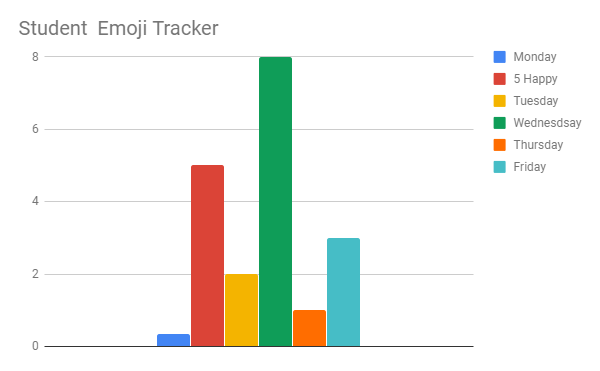
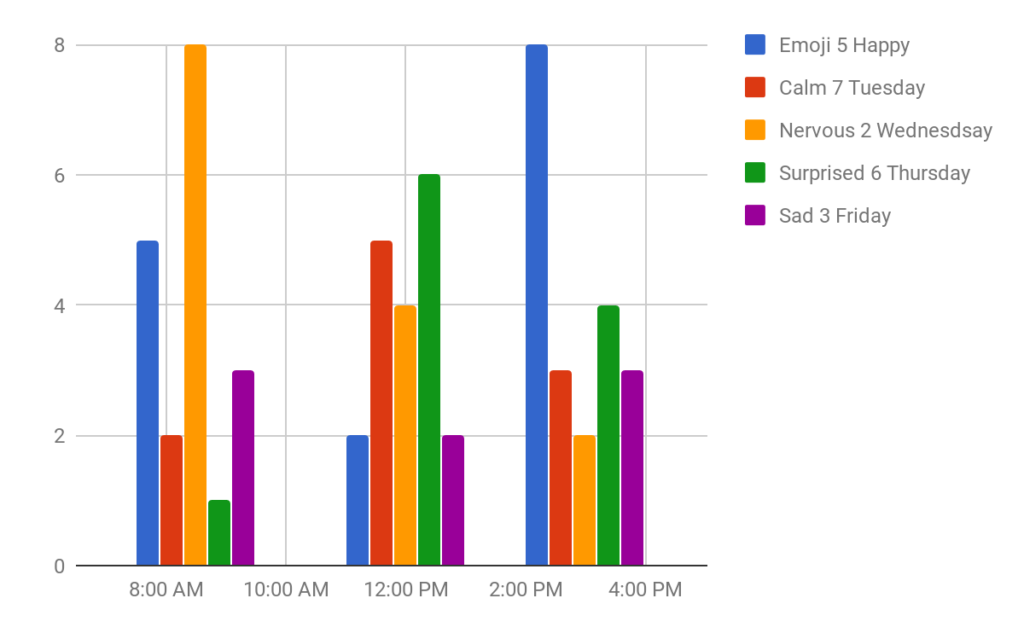
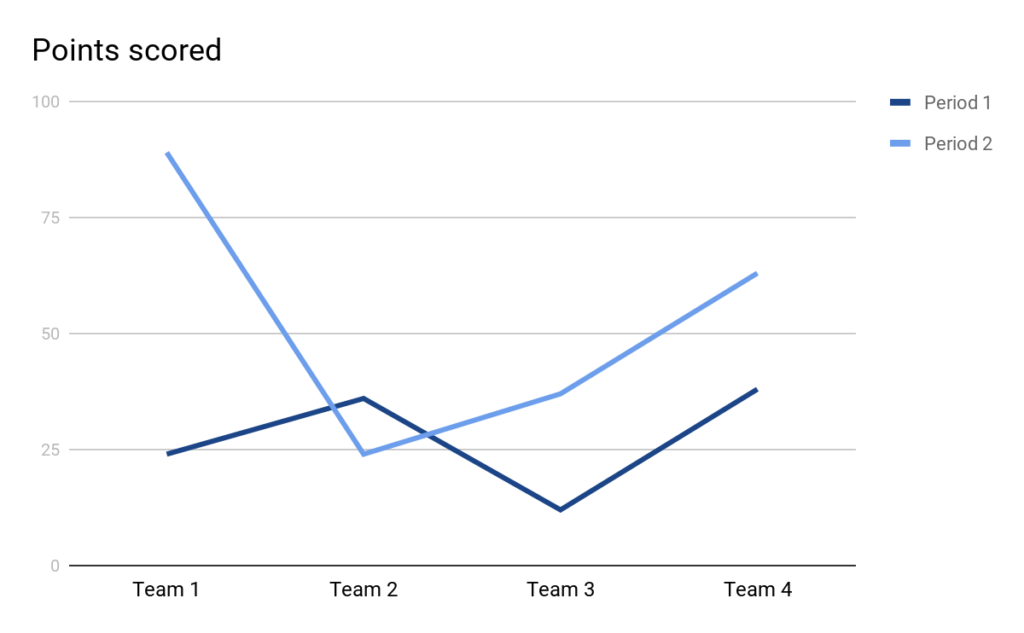
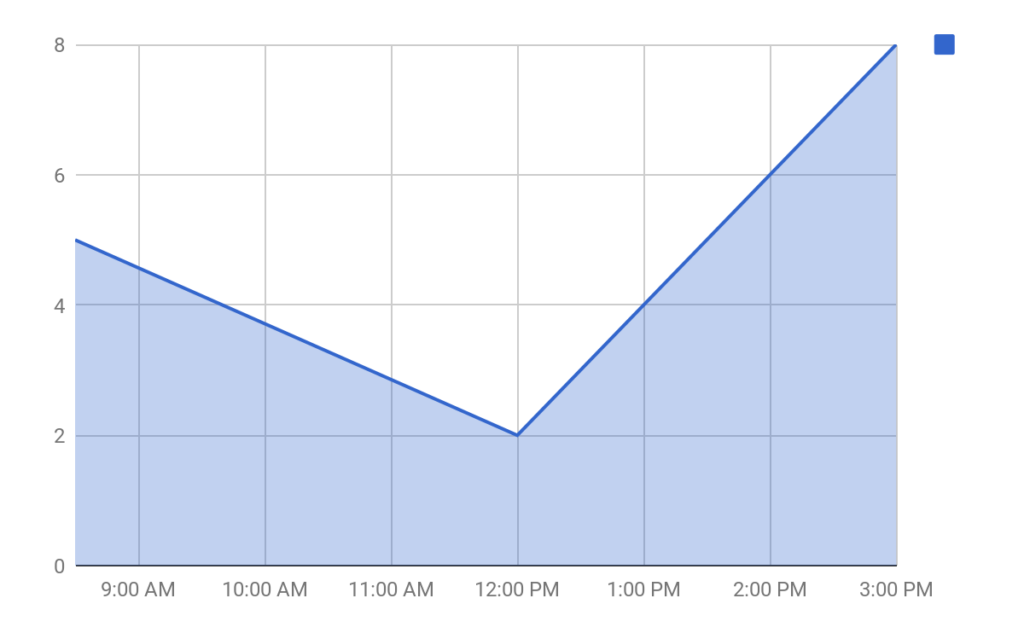
Lessons 1 & 2 Overarching Goals For The Lesson: Health Advocacy: ● Learn how to manage ones emotions ● Learn how to express feelings in a healthful way ● Learn where to seek help when needed One of the important overarching goals of this unit is to encourage students to communicate more effectively. Note: Sometimes students are injured during recess and come back to class tearful. When prompted about what happened they say nothing. Using an emoji tracking system can help them express their feelings without having to communicate verbally. Grades 3-5 7.5.1 Identify responsible personal health behaviors. 7.5.2 Demonstrate a variety of healthy practices and behaviors to maintain or improve personal health. 7.5.3 Demonstrate a variety of behaviors to avoid or reduce health risks. ● Understand and use a computer draw/paint program and its capability to copy, paste, resize, rotate, flip horizontally and vertically Foundations of Health ● Identify the factors that influence health and the ways that healthful decisions and behaviors can promote wellness ● Define health literacy ● Utilize a responsible decision making model ● Demonstrate the ability to write realistic, achievable, measurable long and short term goals ● Describe health skills/ health education standards and risk behaviors Think site from the National Project Site. K What do you know about emojis? W What do you need to know? L How can you learn about emojis and the number associated with the range of emojis? S What sources help learn more about emojis ? http://www.readwritethink.org/classroom-resources/student-interactives/creator-30846. If I wanted to express my feelings using my device what image could I show? Circle an emoji from the feelings chart that represents how you feel right now. Explain to students that the look of “dismay” was chosen to express your feelings in real time. Using the analog or computer time write the time on the smart board. Encourage students to ask you about your choice. Make sure you revisit the feelings chart right before dismissal. Here students can tell what they know or think they know. Fill out the columns as you work through the unit. 1- discuss/role play dealing with obstacles in daily life 2-review identifying emotional states FB Smartphones & any device that contains the the emoji interface. Goals of the lesson (s): STUDENT OBJECTIVES Students will develop inferential comprehension skills by “solving” unknown words using context clues or images. Activity Launch: Put several emojis on the smart board. In groups or individually students can access https://emojipedia.org/ to label emojis from their emojis feelings chart. The emoji with the vertical tears can be classified as, “loudly crying.” Students can use their own descriptions for the selected emojis they choose. Students can create, “opposites” showing emotions or feelings that reflect happy & sad moods in the same time frame. Encourage students to participate by designing your own emoji chart. If a student is accompanied by an STS or Student Therapeutic Service individual encourage the child’s worker to participate as well. Give a few examples on the smartboard and have students describe what they see. The goal of this lesson is to have students check in with an identifiable emoji from the, Feeling Chart. Students turn and talk briefly discuss the emoji they chose and how that emoji represents their feelings. Lesson 1: Another goal is to get students to enjoy their time that they spend at school. Tweaking their emotional state and tracking how they feel during the course of the week helps students micromanage their behavior and recognize trouble spots in real time. Using this tool as a pedagogical tool is a great way for me to know where my students are in real time. ● 7.5.3 Demonstrates a variety of behaviors to avoid or reduce health risks. ● Understand and use a computer draw/paint program and its capability to copy, paste, resize, rotate, flip horizontally and vertically ● CC.2.4.5.A.2 Represent and interpret data using appropriate scale. ● M05.D-M.2.1.2 Display and interpret data shown in tallies, tables, charts, pictographs, bar graphs, and line graphs, and use a title, appropriate scale, and labels. A grid will be provided to display data on bar graphs or line graphs. [Please see PDF attached above for additional lesson plans and appendices]
Mental , Emotional & Personal Health
Lesson Objectives and Standards: Pennsylvania
Important Content Connection: The Emoji Unit contains an Art, Health Advocacy, Math, Psychology, and Research component.
Materials: ipads, desktops , laptops , plain drawing or sketching paper , secured Google Drive student accounts , smartphones ( only if your school is a BYOD – Bring Your Own Device ).
Link Prior Knowledge : Use a K-W-L-S digital chart using the digital creator from Read-Write
Components of the lesson
Anticipated Student Response
Teaching Notes
Evidence of Learning
Teacher Intro:

Students will complete the K-W-L-S chart .
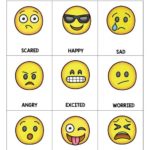
Students tell what they know about emojis and where they can find them.
Students tell where they can find emojis using social media :


Overarching Goals: For The Lesson: Lesson 1: How Are You Feeling?
Lesson Objectives and Standards:
Important Content Connection: ELA, Health Advocacy, Mathematics
Materials : Emoji Chart
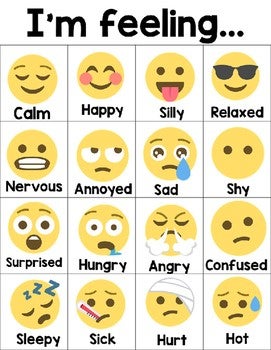
Link Prior Knowledge : Health Advocacy , Introductory Lesson
Components of the Lesson
Anticipated Student Response
Teaching Notes
Evidence of Learning
Turn & Talk Protocol: This strategy allows all students to participate in discussion.
Students enter into a meaningful discussion about their choice of emoji from the Emoji Chart.
Students graph their choice of emoji using a horizontal bar graph in Google sheets.
Students use data collected from their Feelings Chart to monitor their range of emotions.
Bibliography Digangi, S. A., Maag, J. W., & Rutherford, R. B. (1991). Self-graphing of on-task behavior: Enhancing the reactive effects of self-monitoring on on-task behavior and academic performance. Learning Disability Quarterly, 14(3), 221-230. DOI: 10.2307/1510851 Durlak, J. A., Weissberg, R. P., Dymnicki, A. B., Taylor, R. D., & Schellinger, K. B. (2011). The impact of enhancing students’ social and emotional learning: A meta-analysis of school-based universal interventions. Child Development, 82(1): 405–432. Harn, Ren-Whei Joanna (2017). The Visual Language of Emojis: A Study on College Students’ Social Support Communication in Online Social Networks (Doctoral dissertation). Retrieved May 20, 2018 from University of Kansas Scholar Works, https://kuscholarworks.ku.edu/handle/1808/26036 Kageyma, Y. (2017, September 21). Shigetaka Kurita: The man who invented emoji. Retrieved May 26, 2018, from https://www.cnn.com/style/article/emoji-shigetaka-kurita-standards-manual/index.html Rafferty, L. A. (2010). Step-by-Step: Teaching Students to Self-Monitor. TEACHING Exceptional Children, 43(2), 50-58. doi:10.1177/004005991004300205 Riordan, M. A. (2017, May 19). Emojis: Tools for Emotions: Communicating affect in text messages. Psychology Today. Retrieved May 26, 2018, from https://www.psychologytoday.com/us/blog/more-just-text/201705/emojis-tools-emotions Wright, J. (2013). How To: Teach Students to Change Behaviors Through Self-Monitoring [Web log post]. Retrieved May 20, 2018, from http://www.interventioncentral.org/node/961544 Wright, J. (2013). How To: Teach Students to Change Behaviors Through Self- Monitoring [Web log post]. Retrieved May 20, 2018, from http://www.interventioncentral.org/node/961544